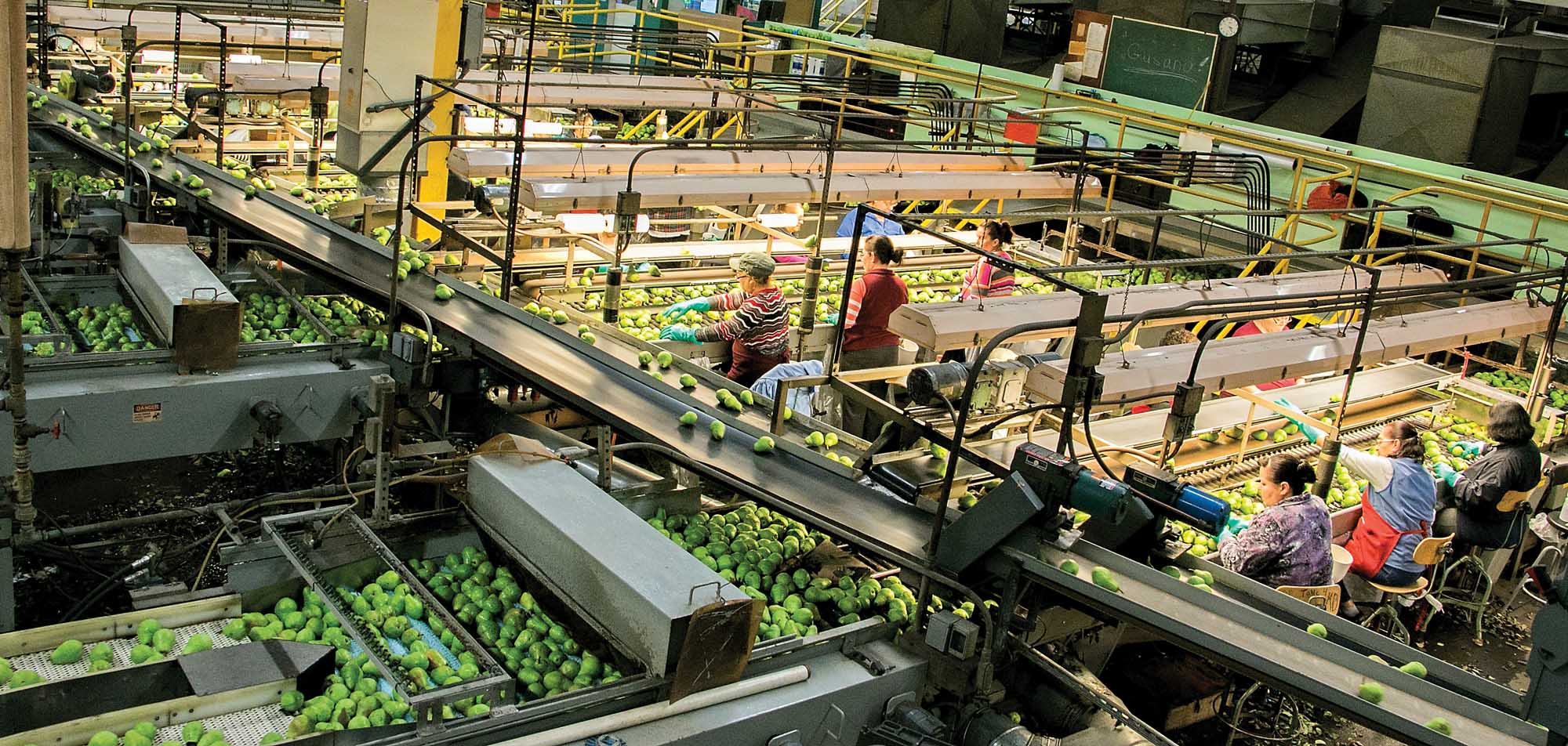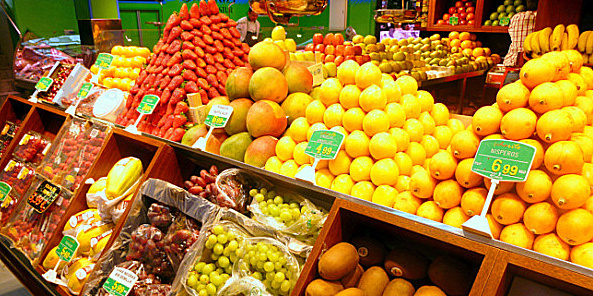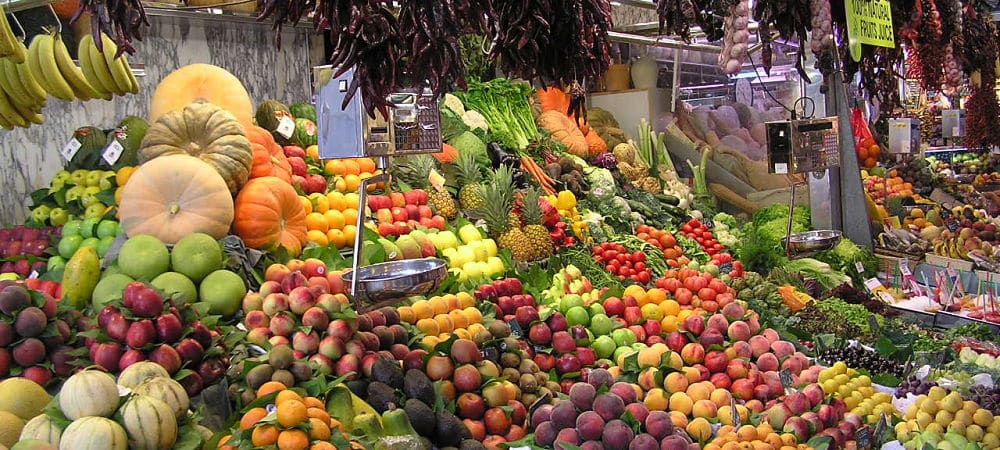QUALITY
- THE PACKING
This
is probably one of the least important factors for the consumer, but it's
fundamental for the entire chain that will drive the food from the farm to his
table.
Among
the agricultural products, the most affected by this point are fruits and
vegetables.
Packaging
actually has many roles, all important for someone, all binding for the farmer.
The selection
This
is the first challenge that the food must undergo when it leaves the field. It
is sorted according to several criteria which are in general its size (one
speaks of calibration, often standardized), its color (according to criteria
established for each product, sometimes variable according to the destination),
its visual quality (aspect, esthetics, respect of standards) and its state of
maturity (insufficient, timely, too advanced) or freshness.
Personal
video: nectarine packing
These
criteria will decide the classification of the product in first choice (or
extra, for those who still practice it), second choice, sometimes third choice,
industry (transformation into juice, concentrate, puree, or cutting for
different uses in the food industry and the preparation of cooked dishes), or
trash.
This
work is carried out in the packing house, in an increasingly industrialized way
in order to reduce costs and centralize ever larger volumes.
Each
packing station has its own working capacity, adapted to the group of farmers
who bring its production, and to the different products concerned (it's obvious
that we won't prepare melon like cherry or lettuce like carrot).
The
sorting is generally done by a machine, more or less sophisticated, with
assistance by people to refine the quality selection, according to criteria set
for each batch, particularly with regard to the sorting of visual defects.
More
and more seldom in rich countries, and still frequently in developing
countries, selection can be done entirely by hand, but generally following the
same quality criteria.
The
farmer must do everything possible to maximize the classification in first
choice, which will be much better paid for him than the lower categories. The
industry and the bin don't usually cover even the cost of harvest.
The container
Once
selected, the food will be placed in a container, a packaging, which
corresponds to the requirements of the client. The diversity of formats is a
real headache for the packing house.
There
are boxes of different sizes in cardboard, compacted cardboard, wood, reusable
or disposable plastic, trays (different sizes, different colors, with or
without cover, with or without film, with or without net, with or without
handle), the cells (paper, cardboard, plastic, in all sizes), etc.
For each client, requirements may be different, with their own brands,
or the brands of the producer. In addition, the same customer can change its
formats from one year to another, making the remaining stock of the previous
year obsolete and unusable.
But the station has to manage an extremely complex stock, and expensive,
because the orders are generally carried out day by day, forcing it to
permanently have a volume of each type of packaging allowing it to respond
immediately.
For us here in Seville, if a client from Frankfort places an order for
us on a truck on Monday, we have time to prepare it and send it to him. But if
we don't have the necessary packaging in stock, we don't have enough time to
order them, and we lose the sale. Because the truck must arrive on Monday as
planned. No delay is acceptable. And we must also count with the French ban on
truck traffic on Sundays and public holidays.
The container obviously has a great marketing importance, but it's also,
depending on the case, a protection or a constraint.
A box with its cell protects the product, prevents it from moving and
being manhandled during transport, and helps maintain the quality of the
product until sale.
On the other hand the tray, according to the products which it contains,
can become a negative constraint for the quality. This is true for large
products, not for small products, such as cherry tomatoes, raspberries,
blueberries, cherries, etc. In the case of peaches and nectarines, the tray
requires to put a very firm fruit, even hard. It's the opposite of quality.
But some clients, or some markets (more and more numerous) only want
this format, much more convenient for the sale to the consumer (no
manipulation, no weighing, the price is pre-established). The fruit is then
transformed into a totally industrial product, and the satisfaction of the end
customer no longer matters.
The type of packaging is of extreme importance for the marketing
channel. Yet, in many cases, after a difficult, delicate and expensive
packaging work, products are then presented to the consumer in bulk, out of
their expensive packaging!
The labeling
It may seem trivial, but it is essential. The label contains all the
necessary legal information (country of origin, packing company, product
characteristics, quality, size). Some customers require that their own brand
appear, and even that is printed bar code that will be used in stores.
These labels are printed in the packing station itself. A room will be
empowered for this, with the necessary printers and all the stock of the
different formats of labels, sticks and other added items.
No printing defects are tolerable.
Once, it happened to us to see a large batch refused in destination for
a defect of the printer, barely detectable with the naked eye: the bar code was
not readable for the machines. All the work was perfect, but the label was not
usable in store. For the client, this is a real problem, since he has
eliminated the need to label himself, so he is not equipped to make up for a
labeling error.
For
the packing station, an error of this type can be extremely expensive. It has
little choice. In fact, we had to modify our control protocols as a result of
this incident.
Either
it sends someone on the spot with the corrected labels, but it does not have
the option to meet deadlines any more. The product is not suitable to be sold
within the agreed time.
Either
it tries to sell it to someone else, but it's difficult with packaging and
labeling intended for a concrete client. Ultimately, it will be solved anyway,
usually by a significant discount on the selling price to the station (then
usually passed on to the farmer), which will probably not be applied to the
consumer.
In
short, labeling is an important point that does not support approximation, let
alone error.
And the quality in all this?
In
fact, we only talk about that.
But
the product itself hardly counts. As long as it meets the minimum requirements
(size, appearance, sugar, juiciness, color, firmness, freshness, etc.),
packaging becomes more important.
The
quality of the packaging depends on the entire process of transport, handling,
storage and preservation that will drive the product from the field to the
shelves to be sold to the consumer.
The
food production is gradually losing its soul under the increasingly tough blows
of markets.
When
I arrived here, the clients came to visit our orchards, to taste fruits on the
tree, to appreciate in the field the quality of the realized work.
Today
the client, if he comes (which is more and more rare), is more interested in
packaging, traceability and hygiene, than in the product itself.
He
verifies that specifications are respected, that hygiene and safety processes
are adequate, and that analyzes (bacteriological and residues) are in
conformity.
The
product is now defined by numbers, analyzes, test results, accreditations,
traceability.
The
product is now defined, for the satisfaction it gives, only by sales figures,
and on cooking TV programs.
Food
production is slowly pandering to the market demands, which are trying to
convert it into an industrial process like any other, in which everything is
predictable and predicted, especially with regard to quality.
Quality
is present, but in criteria often difficult to perceive and understand for the
consumer.
And
it's not the arrival of Amazon in the food market that will improve that.
The
farmer has to comply with the requirements of the markets, and only those who
can sell on short circuits have the opportunity to value a taste quality, often
associated with a level of maturity that requires almost immediate consumption.
As regards consumer, he wants to enjoy the
food, and still dreams of finding "the flavors of yesteryear", even
in supermarkets, which are less and less able to offer them.
These are two very different conceptions for the same product, which
further increase the growing incomprehension between the rural and the urban
world.









Thanks for the useful information. Your article is beneficial for us and those who are searching for food tray packaging machine for plastic food tray online
RépondreSupprimerGreat blog. Please visit our services Vegetable Seed Packing
RépondreSupprimerThese are truly some great Packaging ideas
RépondreSupprimer